Liquid canvas: Steffen Binke’s underwater portrait photography
Underwater portrait photographer Steffen Binke talks about underwater posing and composition
• March 2018 issue
What does underwater portrait photographer Steffen Binke hope to produce when he clicks his shutter? “Art,” he says, and then—without skipping a beat—notes that he’s not being boastful. “I’m not interested in merely producing images,” he says from his Queensland, Australia, home studio with spacious in-ground swimming pool. “I want to produce artistic portraits that could just as well hang in an art gallery as on the walls of my clients’ homes.”
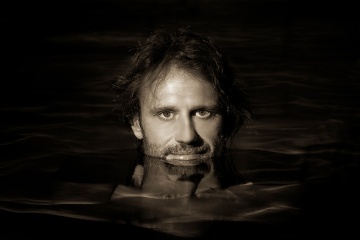
A slew of international photography awards and a steady stream of clients suggest the German-born Australian is accomplishing exactly what he set out to. Paging through his portfolio of underwater portraits is like diving into another world, one where everyone is elegant and romantic, as Binke’s camera has captured them suspended in both time and water.
Why water? “Ah!” says Binke in his German-accented English. “Water makes everything more poetic, more romantic, more enchanting. That’s why it has become my canvas.”
Subaquatic aspirations
Binke came to photography after a knee injury ended his 10-year professional soccer career in Germany. While working as a scuba diving instructor on the Great Barrier Reef, he started getting serious about underwater photography. “I loved introducing people to this unique, other, undersea world and photographing it,” he says, recalling the early morning in 2008 when he produced an award-winning photograph that was published around the world: a dramatic close-up of a dwarf minke whale near the Great Barrier Reef.
He used a fish eye lens to capture the massive whale as it swam only a few feet from him. “It was so close to me that I thought I could hear it breathing and its heart beating,” says Binke. The image was awarded the grand prize in National Wildlife magazine’s 2009 photo contest and convinced Binke he might make a living as a photographer.
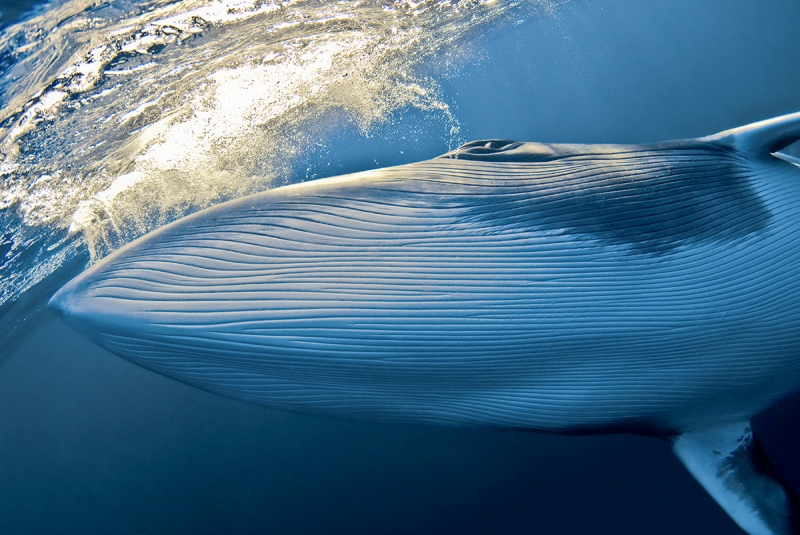
Binke enjoyed the fame—and the licensing fees—he earned from that image and others, but he also realized he wouldn’t make a living as a photographer unless he found a niche that set him apart. Fortuitously, he met his now-partner Arielle Albert, a fashion designer from Mauritius who suggested he consider specializing. “I thought there would be an audience for art-quality underwater portraits,” she says. “It was something different, something unique.” The two opened Binke Photographic Art in 2010.
“It took us about three years of marketing via social media and word of mouth before we were convinced we could make a living doing this full time,” Albert says. Today, Binke considers her the visionary for the business. In the beginning, the pair went to nearby swimming pools to promote their work, advertised on social media, and promoted their business at trade fairs.
They faced many challenges. “First, we had to educate potential customers,” Binke says. “Although underwater portrait photographers are more common today, we had to spend a lot of time explaining—and showing—what we were offering when we started out.” Adds Albert, “I knew people would love the fairytale, dreamlike quality of Steffen’s portraits once they saw them.” Clients trickled in, and the business grew as word spread. Today the pair averages three to four clients a week and orders range from $1,500 to $10,000.
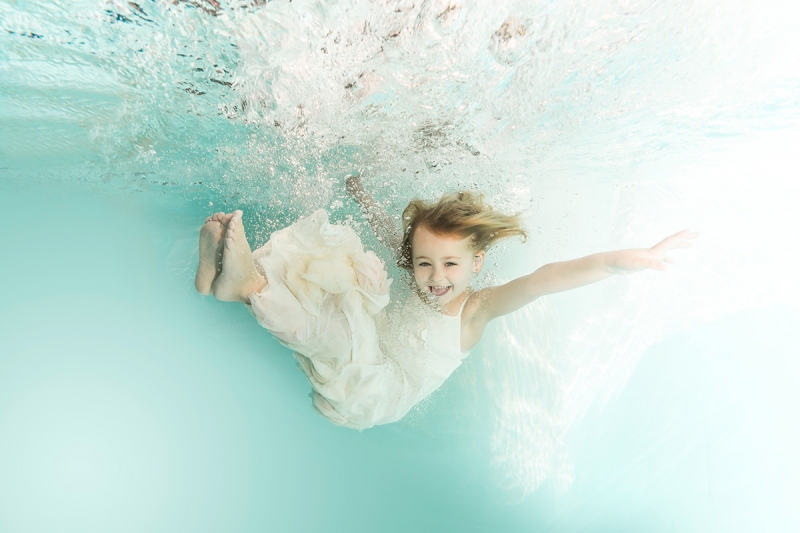
Underwater posing
Watching Binke in his pool with underwater-housed Nikon D800 in hand, coaching a wary adult to let themselves slip into the water and float free, it’s clear that a large part of making a successful underwater portrait is getting the client to relax. “An adult’s normal instinct is to take a big breath before they go underwater, but that means they will probably have puffy cheeks and will be too buoyant,” he explains. “I want them to embrace the water, not fight it.”
Taking a deep breath will also produce bubbles that can obscure an expression or mar a shot. “We tell them to act for this shoot as if they have no bones and feel weightless and elegant,” Albert says. “After all, we’re not interested in producing a picture simply of someone swimming underwater; we want to make a piece of art they will keep forever.”
Facial expressions are key. “Open your eyes. Relax. Have fun underwater,” Binke and Albert instruct subjects. Prior to a session, the pair share their portfolio with clients, pointing out possible poses as they explain the process. It’s this give-and-take that makes for successful underwater sessions.
Surprisingly, non-swimmers often make better subjects than experienced simmers. Non-swimmers, who may have some fear of the water, usually listen more carefully and take his advice, while accomplished swimmers are prone to take a deep breath and swim away. “But this isn’t about how long they can hold their breath or how far they can swim,” says Binke. “We want them to relax while they are underwater, not work.”
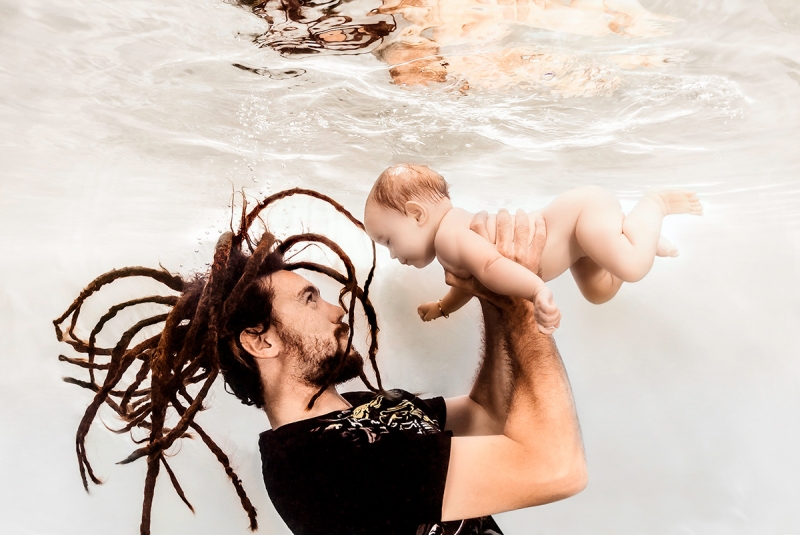
Clients usually spend only a few seconds underwater before returning to the surface, where Binke shows them the shots he’s made and explains how they can be improved. Time is always a challenge. “You only have a few seconds to make a picture. And then there is the light that is always changing and technical challenges with the camera.” Binke admits there’s a luck factor given these constraints.
Binke’s favorite subjects are children. “An adult may overthink the process, especially if they are non-swimmers, but children are more natural. So many Australian children learn to swim at an early age and they treat our pool like it’s their playground. They feel free and want to show off and get more involved.”
Binke likes working with babies and children because they don’t overthink the session. They usually open their eyes underwater, smile, and have a relaxed expression. Binke’s youngest client was 11 weeks old. “When he was underwater for those few seconds it was if he were returning home to where he had spent the last nine months,” he says.
Because Binke is busy shooting portraits, he has little time to return to the Great Barrier Reef to photograph marine animals. But he’s not complaining. “I find this work infinitely challenging,” he says.
“I never know what I am going to get when I am photographing underwater. Imagine shooting a model: The minute she slips underwater everything will change, from her hair to her dress to her expressions. There is so much chance, so much randomness in taking an underwater portrait. So much of it is out of your control. Arielle and I never know what we really have until we review our pictures to choose and edit them. That’s both the challenge and the thrill. And that’s something we never get tired of.”
Robert Kiener is a writer in Vermont.

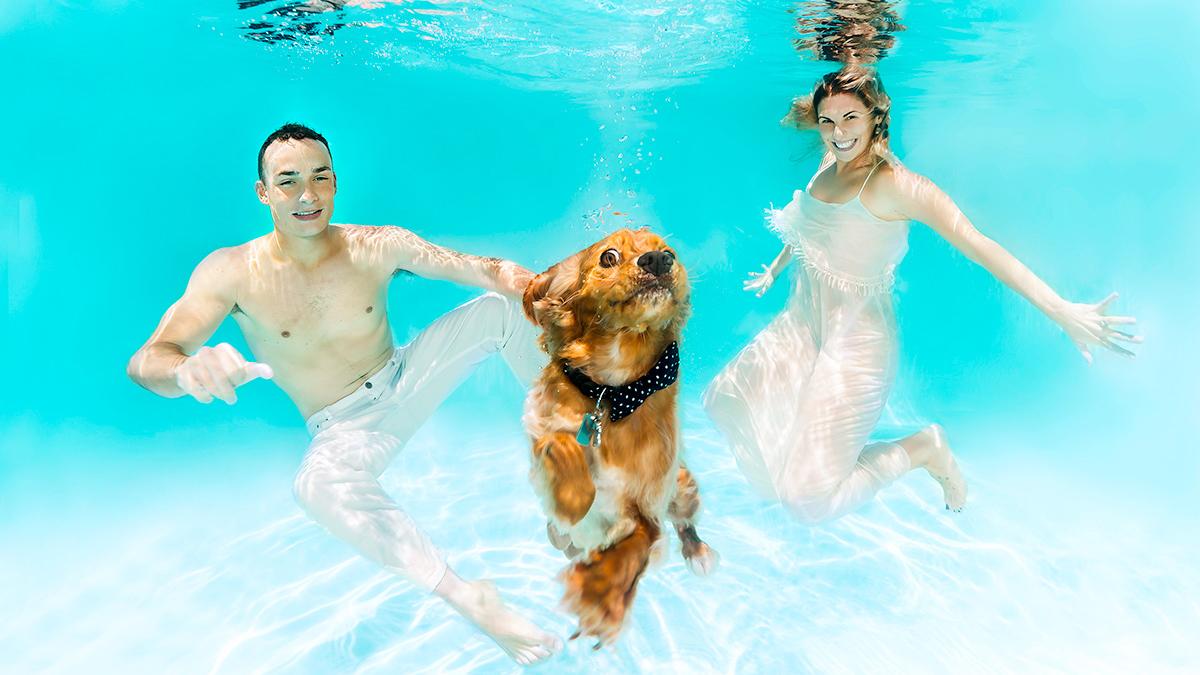
 View Gallery
View Gallery


